There has been a war about electricity prices reflected in front page headlines. For example:
- Peter Martin in the SMH – It’s gas, not renewables, that is pushing up electricity prices, report finds
- Phillip Coorey at the AFR – Feds order probe into Qld power
- Jackson Stiles at The New Daily – Coalition paralysis over energy target risks gas-fired chaos
Peter Martin’s article is based on an Australia Institute study of electricity prices undertaken by Hugh Saddler. It found:
- there is absolutely no positive relationship between the share of wind generation in supply and wholesale electricity prices in the state – in fact a negative correlation;
- there is a very strong positive correlation between wholesale gas prices and wholesale electricity prices.
So:
-
It is therefore concluded that price increases in SA, and to a large extent in other states also, are almost entirely the consequence of high wholesale gas prices.
Here is a graph charting gas prices against electricity prices:
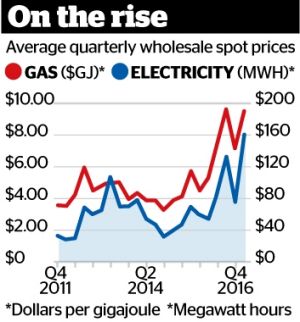
Saddler:
“More detailed analysis shows that market wholesale prices are consistently lower when there is a high level of wind generation, than when there is little wind. Over the past four or five years in the South Australia wholesale market, volume weighted prices received by wind generators have been around 20 to 30 per cent lower than volume weighted average prices for the market as a whole.”
In contrast, the correlation between wholesale electricity and gas prices is “striking”. Both move down and up together.
“Higher wholesale electricity prices, and hence higher retail prices are almost entirely caused by higher gas prices,” Dr Saddler concludes.
“A similar, though less stark effect is seen in the other mainland national energy market states. This is not a malfunction of the market, but precisely how it was expected to operate.”
War of words on Queensland prices
Recently there has been a war of words initiated by Josh Frydenberg trying to shred the Queensland government’s credibility on climate and energy policy. Apart from rooftop solar, Queensland gets most of its electricity from coal, topped up by gas. However, the Labor government has announced a target of 50% renewable electricity by 2030 and zero emissions generally by 2050. Early in June the Clean Energy Council ran a media release Queensland leadership to spark new electricity supply and lower prices which praised the state’s efforts:
-
with almost 20 projects either under construction or due to start this year.
For Frydenberg such good news stories must be destroyed with alternative facts.
On local radio Mornings with Steve Austin, Frydenberg attacked the Queensland government through it’s state-owned generators for “gaming the system”, which, he said gave Queensland the nation’s most expensive electricity, costing jobs.
In all probability nothing outside the rules happened, but State Minister Mark Bailey, was then attacked by Austin, ignorant of the facts or any wider perspective, and conveniently using Frydenberg’s cherry-picked playbook. Bailey responded that nothing happened. He wanted to talk about the present, where in July retail prices to consumers went up by only 3.3 per cent, contrasting with Sydney where prices climbed 15 to 20%, Adelaide where prices rose from 16 to 20%, and Canberra’s where prices were up 19%. Melbourne prices are to rise on January 1.
Bailey would have been better off fessing up, putting Frydenberg’s facts in context, and moving on.
I believe ‘gaming’ did go on in the first quarter of 2017 and has done so for years, not just in Queensland, although Qld have been the champs in recent times. This is how it works. [See Update 4]
The market operator AEMO (The Australian Energy Market Operator) calls for bids for electricity in half-hour blocks. The market really consists of five pools – Queensland, NSW (including ACT), Victoria, SA, and Tasmania, linked by interconnectors. So apart from SA where much comes from Victoria, supply and demand are largely resolved within each pool. Winning bidders are allowed a margin of undersupply, no doubt to account for production contingencies or whatever. After winning bids, generators have at times withheld supply within the allowable margin, then bid on the spot market for the demand thus created. The spot market can vary from an allowable $14,000 per KWh to negative territory.
When prices peak above $5,000 KWh the Australian market regulator AER (Australian Energy Regulator) automatically investigates, and usually finds that no rules were broken. Or occasionally if by accident they were, the penalty is less than money made.
As I heard on the ABC at the time, and confirmed by Giles Parkinson at RenewEconomy, Bailey had some months ago now instructed its generators to cut out the bidding practices that caused the problem. As Parkinson said, Queensland went from having the most expensive wholesale electricity in the country to the cheapest.
Then there was also specific measures in the Queensland state budget*:
On 31 May 2017, the Queensland Competition Authority recommended that retail electricity prices for the typical residential household in regional Queensland increase by 7.1%.
The proposed electricity price rise has been driven by substantial increases in the wholesale electricity prices resulting from supply and demand imbalances in New South Wales, Victoria and South Australia.
In response, the Government will meet more than half the increase for Queensland consumers through a $771 million electricity affordability package in 2016-17, funded in part by the dividends it receives from government-owned electricity generators. This will put direct downwards pressure on electricity prices over the next three years, while also reducing the retail electricity price increase in 2017-18 from 7.1% to 3.3% for the typical household.
The price reduction will be achieved by the Government taking on responsibility for the cost of the Solar Bonus Scheme premium Feed-in-Tariff, for consumers with photovoltaic solar panels on their roofs, for the next three years to 2019-20. This illustrates the benefit to Queenslanders of keeping income-generating assets in public hands.
So the retail price charged is set by a regulator independent of government. The Queensland government effectively reduced its approved revenue take from electricity generation, and took the rooftop solar feed-in tariff out of play.
In addition to owning 65% of electricity generation in Queensland, the government owns the high voltage transmission system, plus the network distribution (suburban poles and wires), which are natural monopolies.
Queensland has been criticised for using these revenues to fund the state budget, but it has to be remembered, that is the very reason they were not sold. In general terms, all parties are doing well in the electricity business Australia-wide except consumers. In other states much of the electricity system, including high-voltage transmission and distribution networks have been privatised. Profits go to private enterprise, much of it off-shore.
The Queensland government revenue take may still be considered excessive, but that is an argument for another day. As a factoid, AGL’s earning per share are forecast to increase by about 72% over the next three years, and the retailers, the fourth layer in the electricity system that sits above have been criticised for making profits above other retail businesses. In Queensland only the Southeast Region has been privatised. Players such as AGL, Origin and Energy Australia make a profit, but it is difficult to see what they do other than advertise and send out bills. They don’t even read the metre, which I think is done by Energex (perhaps they pay Energex, I don’t know).
Meanwhile Frydenberg’s campaign against Queensland clean energy is political humbug. Asking the regulator to do the job the regulator routinely does is meant to generate headlines. If he is well-advised, and we must assume he is, he knows perfectly what he’s doing.
If the gaming system is to be prevented, moving to five-minute bidding instead of 30 minutes would cure it. The Australian Energy Market Commission has had a proposal to change to five-minute bidding for five years. Problem is, it doesn’t suit the fossils, especially coal.
Anyway, here are the historical state residential electricity prices:
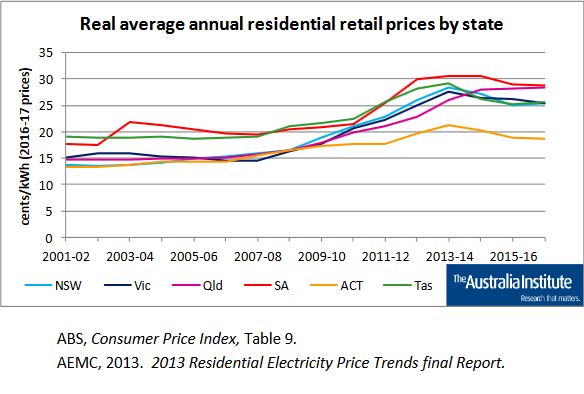
Here are the historical spot prices:
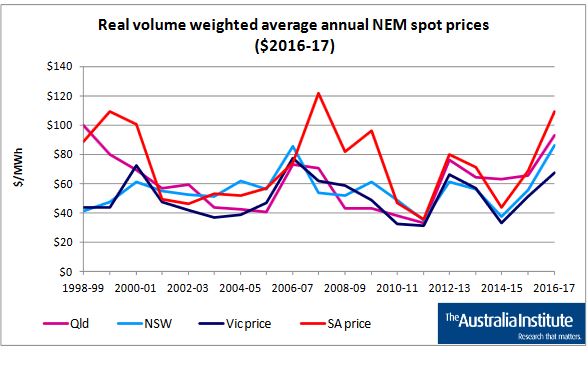
Here are the spot prices for the past three months April to June, from the Parkinson article:
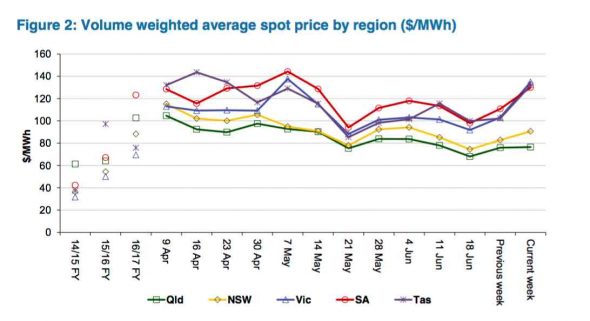
Nothing to see there, Mr Frydenberg.
Here’s what I reported in Power tipping point:
- The article also quoted average spot price of electricity in Queensland through the March quarter as $173.98 a megawatt hour in 2017, as against $80 in 2016. Electricity peaked on 44 separate occasions in Queensland at the market maximum of $14,000/MWh with many of those peaks the result of generators removing capacity and then re-bidding back into the system.
But that is when Mark Bailey took action.
Here are the forecast future wholesale prices:
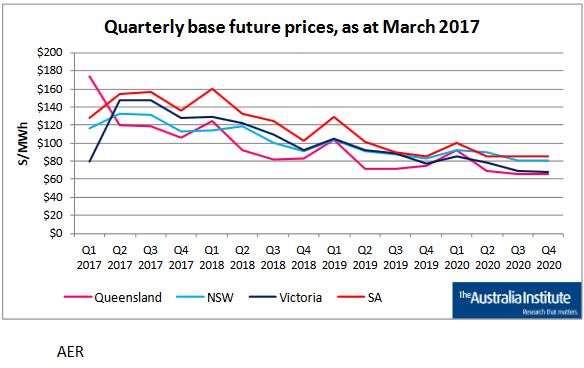
Here, from Finkel, is how he sees future residential prices:
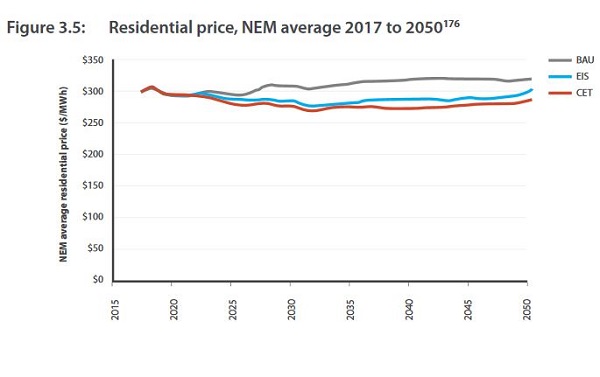
And here is Finkel’s future wholesale pricing by state:
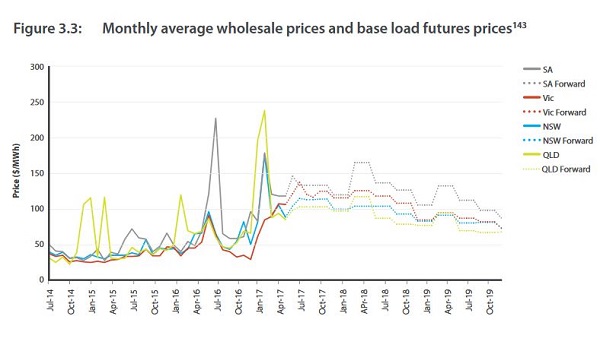
A future with or without gas
In the first decade of this century gas was the fuel of choice. Peter Martin quotes Hugh Saddler:
- “The launch of the market in 1998 was followed by a rush of construction of gas turbine power stations in Queensland, NSW and Victoria and even in Tasmania, accelerated in Queensland by a gas generation mandate policy introduced by the state Labor government.
“It was envisaged that both the much lower greenhouse gas emissions and the superior operational flexibility of these power stations compared with coal would make them ideally suited to supplying hour-to-hour and day-to-day variations in demand for electricity, while also reducing emissions, by using a then relatively low-cost source of fuel.”
Gas is used to augment other supplies at times of peak demand, meaning that although most electricity is supplied by coal, it is the price of gas-fired power that determines the final price when prices climb.
The price rose sharply from 2015 with the opening of three gas liquefaction plants at Gladstone in Queensland, allowing the bulk export of gas previously supplied only to the Australian market.
“It seems that the decision to allow so much of the gas resources of eastern Australia to be exported was made without considering the likely effects on the electricity market,” Dr Saddler writes. “Household and business consumers of electricity are now paying the price.”
If we want to keep being held hostage by gas, then do nothing about the Clean Energy Target. Jackson Stiles’ article above has this graph created from Finkel:
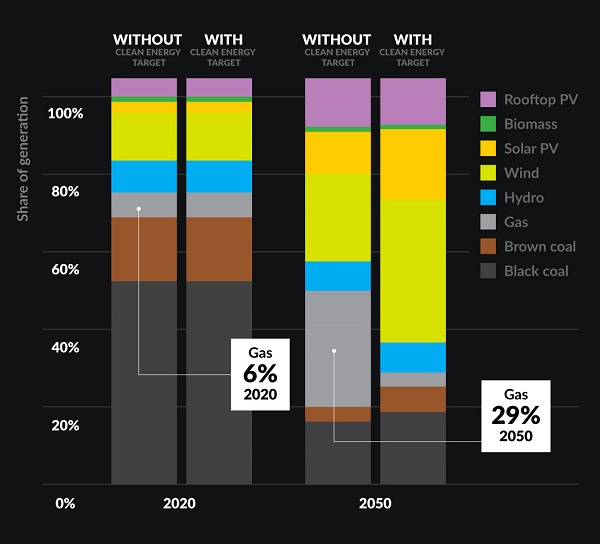
My understanding is that when the Queensland coal seam gas fields were developed, and three huge liquefaction plants opened in Gladstone, production costs were at the top of the cycle, but this coincided with world oversupply.
Now the future of the industry is an absolute conundrum. Greg Jericho explains why withholding export permits or further development of unconventional gas may not help with prices.
Then in early June (thanks, John D for the link) Bruce Robertson penned an astonishing article about the east coast gas market. He confirms that our production costs are at the top of the cycle, and are basically uncompetitive. In 2016 the world market was at 29% oversupply and getting worse. There is a real possibility that one of those Gladstone LNG plants will close.
I have also been told by someone who would know that Santos sold gas it didn’t have and is never likely to have. Santos is one player that is not doing well. When Santos took that action it’s share price was around $12, and some thought it might go to $20. Here’s the 10-year share price:
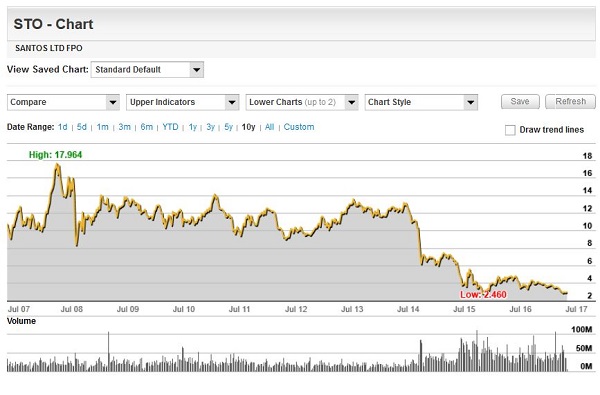
Clearly the crisis in electricity pricing is real, but has perhaps been over-egged in relation to future prices, and the actions of Queensland generators earlier this year have not helped. Certainly what is really going on is difficult to work out, but Frydenberg in not your best source of enlightenment.
In my view the future is not gas, and needs of the planet demand that we use as little gas as possible.
Meanwhile Fryberg has plucked out an anomalous price surge in Queensland in the first few months of this year, and made it into the whole story, ignoring evidence that does not fit his tale.
Update: * THe link marked by the asterisk, and the quote from it was added after the original publication.
Update 2: I’ve removed a long update I’d published here to a new post AER, ACCC and the ABC join the fray on Qld electricity prices
Update 3:
In the new post it has been revealed by the AER that there were only seven power price spikes above $5,000 KWh earlier this year, not 44 as claimed above. All were within the rules.
Quennsland generators have claimed that record demand was the main problem. It is true that when the heatwave in early February that caused several short blackouts in a few suburbs in Adelaide, and then caused issues with an aluminium smelter in NSW moved through to Queensland, on the night of Sunday 10 February, there were rolling blackouts on a number of suburbs in SEQ for several hours. These blackouts were completely unremarked in the MSM. Compare the hysteria over the Adelaide blackouts. Such blackouts are garden variety in a Queensland summer storm season. It’s also worth noting that at night Queensland is entirely supplied by coal and gas, apart from a smidgeon of hydro, so no renewables to blame = no news.
It’s possible that all seven price spikes were associated with Sunday 10 February, or that heatwave event. We have not been told.
Update 4:
As it turns out, on 10 February 2017 Coal plants failed in Queensland heatwave on day of record demand.
Five of them failed in the heat. The Queensland government and electricity authorities are taking steps to minimise the chances of it happening again and a Climate Council report has found the Queensland electricity system “one of the most secure and reliable in Australia.” Turns out Mark Bailey was telling a truth that Steve Austin did not want to hear.

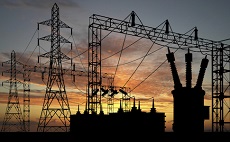
It is worth noting that gas turbines can be modified to run on a variety of fuels including liquid or gaseous bio/renewable fuels.
When you are talking about the peaking power capacity to cover the short periods of very high demand that occur due to heatwaves etc. the costs are dominated by capital costs, not running cost the price of fuel used makes very little difference. (It may be cheaper to use open circuit gas turbines instead of batteries etc. (For that matter, it doesn’t really matter if fossil fuels are used to cover these short periods.)
John, I accept all that while noting that biofuels as they currently exist are not always a gift from heaven.
On gas, there may be transition arrangements and practical compromises that have to be made. However, the last link in the post says we’ve spent our carbon budget, so in principle we should try to get out of gas. Certainly the BAU scenario sketched by Finkel, which sees 29% gas in 2050, is not the way to go.
Last night I added a long update to the post.
The question of power prices is becoming highly political, feeding into the Qld state election. This morning we had another two interviews on local radio, one with the CEO of CS Energy, and one with ACCC boss Rod Sims. Some light but also heat and confusion added.
I’ll have to have another look tonight.
Unfortunately I thought I could watch the Broncos last night and then have time to finish the post.
I listened again to the Steve Austin interviews, which you can find 1:38:30 into the episode, and it sent a lot of hairs running.
Austin ended with a full-scale attack on the Queensland government (his idea of speaking truth to power), but this morning again he was saying that Queensland has the most expensive electricity in the country, which is plain wrong, as shown in this graph from the Mark Ludlow article, which I ended up photographing:
Leaving aside Tasmania as a special case, there are four pools in the NEM. Queensland slightly higher from slightly higher than Victoria to lowest by a clear margin.
Sims is conducting a formal inquiry into the affordability of power, and is holding a session in Brisbane next week from 5-7 (details on the ACCC site). Affordability is definitely a problem, but Sims needs to explain why Queensland has the lowest prices while not conforming to his doctrine of maximum players in competition with each other.
And Austin needs to be aware of what he doesn’t know before launching into “truth to power”.
I’ll have to finish the post on the weekend.
New post up, finally. All I have to do now is send the links to Steve Austin at our ABC.